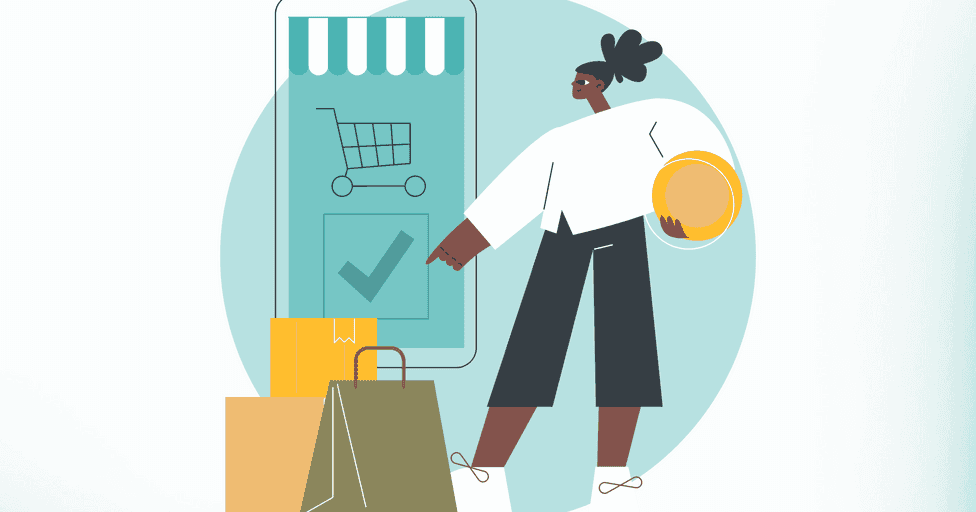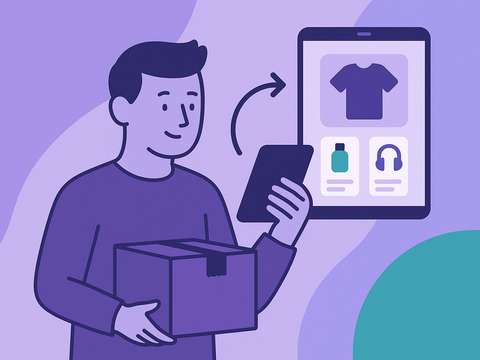Key takeaways and important statistics:
- Post-purchase behaviour defines loyalty. Satisfaction or regret at this stage impacts future purchases and retention.
- Proactive actions increase repeat sales. Personalization and post-purchase tools transform stress into loyalty
- 5% retention boost = 25%-95% profit growth. Small retention gains yield big profit increases.
- 82% say retention is cheaper than acquisition. Keeping customers costs less than finding new ones.
- 67% of loyal customers spend more by year three. Repeat buyers increase spending over time.
- Email click rates average 1.3%-2.62%. Retention emails drive higher engagement.
Knowing what it is or how to evaluate your customer's post-purchase behaviour is not enough.
This critical stage is where satisfaction or dissatisfaction determines whether a customer becomes loyal, regrets their purchase, or experiences post-purchase cognitive dissonance.
If you merely observe that behavior without taking practical action, you will see how your marketing and coating reliability gradually decrease.
This article explores actionable insights and marketing strategies into understanding and optimizing post-purchase behavior. You will address questions like "What do consumers do after making a purchase?" or "What determines if a buyer is satisfied or dissatisfied with a purchase?"
Additionally, you will learn how a post-purchase experience software can turn your customers' stress into a sense of loyalty.

Understanding the post-purchase behavior process: what do customers do after making a purchase?
Post-purchase behavior encompasses the actions, emotions, and decisions consumers engage in after completing a purchase.
After buying a product, customers evaluate not just the item itself but the entire post-purchase experience—delivery, support, and returns.
This process involves actions like leaving reviews, making returns, or reflecting on whether their expectations were met.
These evaluations ultimately shape their satisfaction and influence future buying decisions.
When expectations aren't met, customers often react in ways that impact the business, including:
- Leaving negative reviews
- Returning products
- Reducing or ceasing their loyalty to the brand
Dissonance and anxiety
A significant challenge during this stage is post-purchase dissonance (also referred to as post-purchase cognitive dissonance, which occurs when customers question whether they made the right choice—especially for high-stakes purchases. This type of anxiety can manifest as regret, potentially leading to a return.
Improving the shopping experience with the following tips is essential to reduce dissonance and retain the sale.
What determines if a buyer is satisfied or dissatisfied with a purchase?
Post-purchase customer behavior is shaped by several factors that go beyond the initial transaction. Understanding and optimizing these aspects can significantly impact satisfaction and loyalty.
Lets dive into them:
Flexible delivery options
Offering a variety of delivery speeds and carrier options caters to individual customer needs. Highlighting eco-friendly or premium delivery services can also align with customer values, adding depth to their experience.
Seamless returns and exchanges
An intuitive and transparent return process demonstrates a commitment to customer satisfaction. Providing clear guidelines, pre-paid labels, or even door-to-door pickup options can reduce friction and enhance trust.
Product quality assurance
Beyond meeting expectations, brands can elevate their value by emphasizing durability, sustainability, or innovative features. Providing warranties or certifications further reinforces confidence in the purchase.
Speed and reliability of delivery
Fast and predictable delivery creates a sense of reliability. Tracking tools, proactive updates, and even same-day delivery options can elevate the post-purchase experience and reduce anxiety.
Personalized shopping experience
Going beyond basic recommendations, brands can use purchase history, preferences, and behavior to create deeply personalized experiences. For example, offering subscription models or customized bundles adds convenience and value.
Proactive customer support
Exceptional post-purchase support involves anticipating potential issues and addressing them before the customer reaches out. Providing a knowledge base, live chat, or follow-up check-ins ensures a seamless resolution process.
Engaging follow-up communication
Tailored communication can deepen the customer relationship.
Sharing how-to guides, care tips, or exclusive early access to new products can enhance the perceived value of the purchase and keep the customer engaged.
9 ways to turn post-purchase behavior into repeat purchases
To excel in managing post-purchase behavior, businesses must move beyond simply reacting to customer actions and instead focus on building loyalty through proactive strategies.
1. Send follow-up emails with care tips, usage guides, or exclusive advice
After a purchase, send shipping notifications tailored to the specific product the customer bought.
Include care tips or usage instructions to ensure they feel confident and satisfied with their purchase.
For example, if they bought a pair of boots, explain how to properly maintain the material.
This reinforces their purchase decision, reduces post-purchase cognitive dissonance.
You can automate segmented notification campaigns within delivery notification software.
2. Use behavioral data to recommend complementary products or upgrades
Use behavioral data to recommend products that pair well with or upgrade the customer’s purchase.
For instance, if a customer buys a smartphone, suggest accessories like cases or wireless chargers.
Identify repurchase cycles for consumables like coffee or skincare and send reminders when they’re likely to need a refill.
Automating this process through product recommendation software saves time and improves precision, ensuring the suggestions are relevant and timely.
3. Resolve issues quickly through personalized customer support
Quick and personalized support can transform post-purchase dissatisfaction into loyalty.
Address issues like incorrect sizes or defective products with tailored solutions.
For example, if a product is returned due to sizing issues, follow up with a guide to selecting the correct size.
After resolving the issue, offer incentives like discounts or free shipping on the next purchase.
Incorporate proactive customer support by using a help desk to ensure the customer feels valued.
4. Create urgency with limited-time offers or discounts tied to recent purchases
Encourage repeat sales by sending exclusive, time-sensitive offers after a purchase.
For example, provide a 20% discount if they make another purchase within two weeks.
These offers create a sense of urgency, motivating action while keeping your brand fresh in the customer’s mind.
Tie these discounts to specific post-purchase behaviors, such as leaving a review or referring a friend, to maximize engagement.
5. Turn returns into a chance to promote exchanges or other products
Instead of issuing a straightforward refund, encourage customers to exchange items by offering incentives like free return shipping or discounts on replacement products.
Analyze return reasons to recommend items that better suit their preferences.
For example, if a returned item didn’t fit, suggest similar products with sizing that matches their needs.
6. Keep customers engaged with newsletters featuring personalized content
Send regular newsletters with product recommendations, seasonal tips, or user-generated content that matches their preferences.
For instance, a customer who purchased gardening tools could receive advice on planting schedules or updates on new tools.
Ensure the content feels tailored and avoids coming across as generic or sales-heavy.
7. Introduce loyalty programs with clear benefits for repeat purchases
Launch loyalty programs that reward customers for actions like referrals, reviews, or frequent purchases.
For instance, offer points for every purchase that can be redeemed for discounts or free products.
Use post-purchase behavior data to personalize rewards, ensuring the program feels relevant and valuable to each customer.
8. Incentivize advocacy by offering discounts for referrals or reviews
Encourage customers to refer friends or leave reviews by offering rewards like discounts on future purchases.
For example, provide 15% off for every successful referral or a small gift card for submitting a product review. This not only drives repeat sales but also attracts new customers.
9. Offer subscription services for convenience and retention
For products that need regular replenishment, introduce subscription options with added benefits like discounted prices or free shipping.
Send reminders before renewals and allow customers to customize their subscriptions.
For example, a skincare brand could let users adjust the frequency of deliveries based on their usage habits.
Real-world case studies: examples of how to manage post-purchase behavior
Skechers: encouraging loyalty through automation
Skechers changed its approach to post-purchase behavior by automating the returns process, allowing customers to handle exchanges independently.
This adjustment reduced reliance on customer support and reshaped purchase behavior by eliminating common frustrations.
Over 85% of customers completed their returns without assistance, reducing negative post-purchase behavior like complaints.
This system led to a 20% increase in repeat purchases, showing how structured post-purchase strategies can influence customer behavior.
Ballzy: centralizing processes to improve customer behavior
Ballzy centralized its operations to create consistency in its post-purchase process, which had previously varied across stores.
Automating tracking updates reduced delivery-related inquiries by 65%, addressing post-purchase anxiety and improving post-purchase behavior.
The updated system led to a 30% increase in repeat purchases. By addressing inconsistencies, Ballzy reshaped purchase behavior to increase retention.
Macson: aligning logistics with customer expectations
Macson focused on aligning its logistics with its brand image to ensure that post-purchase behavior met customer standards.
By improving delivery accuracy to 98%, Macson reduced negative behaviors like complaints and cancellations. This approach contributed to a 25% increase in retention rates.
Macson demonstrated how well-planned logistics and communication during the post-purchase stage can influence repeat purchase behavior and reduce dissatisfaction.
Conclusion
Post-purchase behavior is a critical phase in the eCommerce journey that defines customer satisfaction, loyalty, and brand reputation. Positive experiences, like seamless returns, personalized follow-ups, and exclusive loyalty programs, transform one-time buyers into lifelong customers.
With Outvio, you can automate and optimize every stage of the post-purchase process—returns, tracking, communication, and customer service—ensuring satisfaction and driving repeat sales. Discover how Outvio can help your eCommerce business thrive. Try Outvio free for 14 days!




